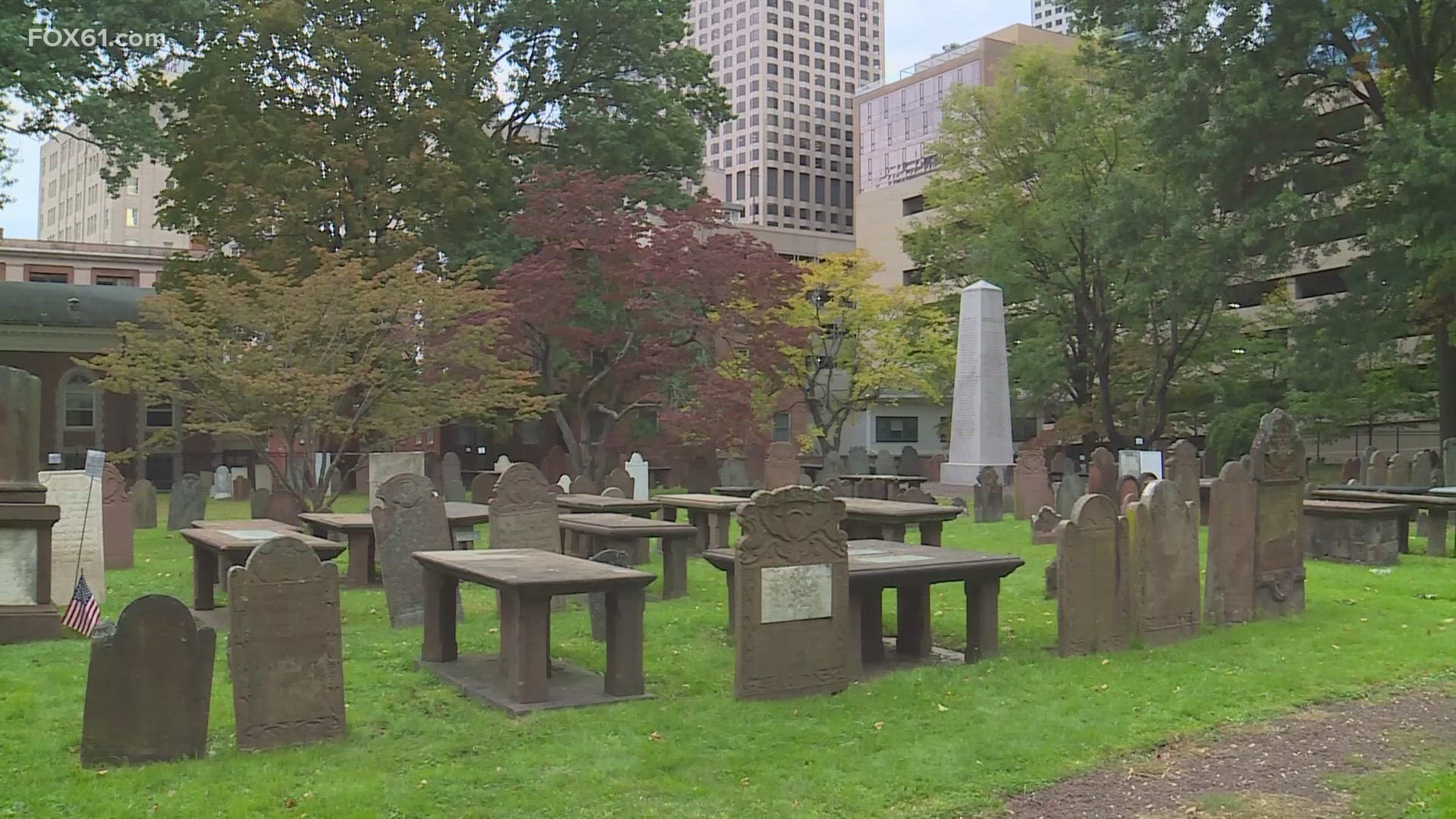CONNECTICUT, USA — When you think of witches, Salem, Massachusetts, likely comes to mind. However, Connecticut's witch trials predate the ones in Salem by decades, including the first execution for witchcraft in Colonial America.
The Connecticut witch trials began in 1647, which was 45 years before the hysteria in Massachusetts and ran for 50 years until 1697. According to the Connecticut Witch Trial Exoneration Project, a group made up of descendants, advocates, and researchers, 34 people were indicted, and 11 were executed during this period.
The first execution was in 1647, and the last executions were in January of 1663, during the end of the Hartford Witch Panic. The governor at the time, John Winthrop Jr., was away from the colonies obtaining the charter for Connecticut Colony during that ordeal.
It's hard to know the actual toll of the trials due to a lack of records from the accusations, trials and executions.
“They’re very, very scattered. We have fewer records than they do in Salem, which is probably part of the reason our witch trials are lesser known," said author and researcher Beth Caruso. Caruso is also a co-founder of the Connecticut Witch Trial Exoneration Project.
Caruso said the primary reasons for convictions and executions were misogyny and community panic.
“There seems to usually involve sickness, illness, some kind of unexplainable event," said Caruso.
According to some speculation, the hangings happened in Downtown Hartford outside a meeting house that stood where the Old State House currently stands.
Another possible location for the hangings cited by historian William DeLoss Love is by the intersection of Albany Avenue and Irving Street, where the Hartford Daily Courant photographed an ancient elm tree in 1930 and called the site the scene of the last witch hangings.
The search for answers about the witch trial victims is personal for Susan Bailey. A DNA ancestry test revealed her tie to history.
"Alse Young was my ninth great-grandmother," said Bailey.
Young, a mother and wife living in Windsor, was hanged in 1647. It marked the first recorded execution for witchcraft in the American Colonies.
“Apparently, there’s no record of what the accusations were for her or any kind of court records other than to say she was hanged, and it just seemed so awful, and she left behind a young child," said Bailey.
“There was an influenza epidemic in the town and Alse Young lived next to four children who died, so we think that’s the reason why she was accused," Caruso said.
The undeserved death is now only remembered by a brick inscribed with Young's name outside Hartford's Ancient Burying Ground.
“We don’t know where she was buried or what was done with her body," Bailey said.
“They would have probably been tossed into a ditch near the hanging site," Caruso said.
Centuries later, at the State Capitol this past May, on the eve of the 376th anniversary of Young's death, some justice was delivered as Connecticut lawmakers passed a resolution absolving those formally convicted and executed of all crimes of witchcraft.
“I think it does bring a measure of comfort to people who have this hanging over their head that they feel bad about what happened to their relatives," said Bailey.
“It names all the victims. It recognizes the history," said Caruso.
Now, the Connecticut Witch Trial Exoneration Project continues the push for more recognition. The group is calling for a permanent memorial for the witch trial victims, as well as spaces that share their history.
“And apply those lessons to [the]present day, whether it’s countries around the world where people are being scapegoated, where science or medicine may not be as readily available or even through social media, witch hunting in that way where people don’t know all the facts," Caruso said.
The 11 people convicted and executed for witchcraft include:
Alice ‘Alse’ Young, Windsor, 1647: Scholars think she was blamed for causing a pandemic in the town of Windsor, where many children died. Married.
Mary Johnson, Wethersfield, 1648: Specific reason for accusation unknown. Unmarried.
Joan Carrington, Wethersfield, 1651: Wife of John. The specific reason for the accusation is unknown.
John Carrington, Wethersfield, 1651: Husband of Joan. The specific reason for the accusation is unknown.
Goodwife Bassett, Stratford, 1651: Specific reason for accusation unknown. Married.
Goodwife Knapp, Fairfield, 1653: Specific reason for accusation unknown. Married
Lydia Gilbert, Windsor, 1654: Blamed for bewitching a gun that killed someone in 1651 even though she was not there. Married.
Mary Sanford, Hartford, 1662: Murdered by hanging during the Hartford witch panic when Winthrop Jr. was away and Major John Mason was in charge. Her only crime was being named as attending a Christmas party on the South Green. (Puritans did not celebrate Christmas.) It was construed as a coven and meeting with the devil. Married.
Nathaniel Greensmith, 1663: Same as above. Husband of Rebecca.
Rebecca Greensmith, 1663: Same as above. Wife of Nathaniel.
Mary Barnes, Farmington, 1663: Specific reason for blame unknown. Hanged with the Greensmiths in Hartford. Married.
Angelo Bavaro is an anchor and reporter at FOX61 News. He can be reached at abavaro@fox61.com. Follow him on Facebook and X.
Have a story idea or something on your mind you want to share? We want to hear from you! Email us at newstips@fox61.com
HERE ARE MORE WAYS TO GET FOX61 NEWS
Download the FOX61 News APP
iTunes: Click here to download
Google Play: Click here to download
Stream Live on ROKU: Add the channel from the ROKU store or by searching FOX61.
Steam Live on FIRE TV: Search ‘FOX61’ and click ‘Get’ to download.

